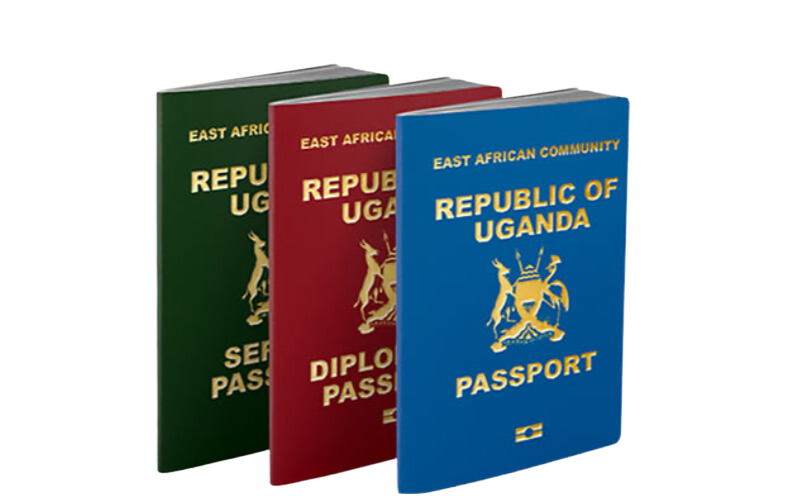Parking list for a Uganda Safari
Parking list for a Uganda Safari : Are you unsure of what to bring or pack for an unforgettable safari experience when you are planning a trip to Uganda for any kind of safari? Recall that packing sensibly and lightly is the first step in having the greatest safari experience. But you don’t need to worry anymore because this post will make packing simpler. What you should bring depends on the season you are going and, most importantly, the purpose of your trip. Are you planning on going on a gorilla trekking safari, a game drive safari to see wildlife, or a bird watching safari? Whatever the safari, the essential items to include on your packing list for a Ugandan safari are as follows:
A current passport
If you are going on a safari in Uganda, your passport should be the first item you pack. You can obtain this from the foreign embassies in your country of origin.

Authentic Visa
All visitors to Uganda must also have a valid visa, with the exception of nationals of those nations’ members of the East African Community (Rwanda, Burundi, Kenya, Tanzania), Angola, Belize, Bahamas, Cyprus, Comoros, Antigua and Barbuda, and Belize Islands. For additional details regarding Ugandan visa procedures, or if you are uncertain if your nation is exempt from requiring a visa.

Certificate of vaccination against yellow fever
If you plan to visit Uganda for tourism or for any other reason, you must obtain a yellow fever vaccination certificate.

Travel Insurance
Ensure that you have travel insurance before going on any form of safari in Uganda. Even though armed ranger guards accompany the majority of safaris in Uganda, anything might happen while traveling or within the country’s national parks.
Long skirts or trousers (for ladies)
This is particularly important to protect your legs from stinging nettles, other insects, and tree branches whether you are going on a gorilla trekking safari, nature walk, or bird viewing safari in Uganda. Travelers going on game drives or visiting cities don’t always need long pants; in fact, shorts might be just as comfortable. Women should wear long skirts or pants rather than short skirts or pants because the latter are socially unacceptable in the majority of Uganda’s rural districts.
T-shirts and short-sleeved blouses
These are very essential to bring, particularly if you plan to go on game drives. They’re also great for unwinding at the safari lodges.
Sneakers
The kind of shoe you wear also depends on the kind of safari you are doing in Uganda. Waterproof hiking boots come in very handy while going on nature walks, walking with chimpanzees, climbing volcanoes and mountains, or even just watching birds. You can bring sturdy leather shoes and flip-flops for game drives or strolls across the community.
Elongated socks
Carrying long socks—ideally made of cotton—is essential when visiting Uganda on a safari. It is generally advisable to tuck your jeans into your socks before going on a gorilla hike or on a nature stroll in the forest to keep insects like safari ants out of your pants.
Pullover
This is quite important for most safaris in Uganda, particularly those that go to the Rwenzori Mountains, Mount Elgon, which may become very chilly in the evenings and early mornings, and Bwindi Impenetrable National Park and Mgahinga National Park for gorilla trekking. This is true for both wet and dry seasons; nevertheless, you will need thick, cozy sweaters and scarves during the former.
Poncho/rain jacket
Belt money bag
A money belt is useful for holding your passport and additional cash for tipping, purchasing refreshments, mementos, or any kind of service.
Gloves for gardening
Specifically for gorilla trekking, you must bring gardening gloves so that your hands won’t get cut while you’re using stinging nettles or tree branches to support yourself.
Shades and a Hat
These are essential for shielding your head and eyes from the stinging sun throughout the dry season.
Swimming outfit, or swimsuit
These suits will come in handy for leisure, especially after a long and exhausting day of gorilla trekking or chimpanzee tracking, as the majority of Safari Lodges include swimming pools.
equipment for taking pictures [cameras]
Bring adequate batteries for your cameras, especially if they are rechargeable. Note that UK plugs can be used in most parts of Uganda, thus you might require a converter plug. For mountain gorillas, a quick film is ideal because there will be a lot of exciting moments to catch.
Repellent for insects
Because of the abundance of insects, particularly mosquitoes, in the jungles, especially during gorilla trekking and chimpanzee tracking safaris in Uganda, insect repellents are also essential to bring. RID is the suggested repellent.
first aid package
Simple, lightweight first aid kits are what you should always have with you, filled with necessary items like bandages, Imodium, liniment for strained muscles, antibacterial cream, aspirin, and other pain relievers, anti-diarrheal and anti-malarial medicines, antiseptic, band-aids, and cold remedies.
A toilet bag and some toiletries
Toiletries to bring include antibacterial soaps, face cleansers, deodorants, hand sanitizers, lotion, sanitary towels, shampoo and body wash, preferably Gillette razor blades, tooth paste and brush, and toilet paper.
Binoculars
This is crucial for any type of safari, including wildlife drives, nature walks, bird watching safaris (which are quite significant), and gorilla trekking, where many sights must be seen.
Lighting devices
You might need to carry small flashlights in case the power goes out. Power outages are a typical occurrence in Africa, particularly in Uganda. In national parks that mostly rely on solar energy, power outages can occur late at night.
Finally, in order to ensure a memorable safari experience, it is crucial for anyone visiting Uganda for a safari to pack long sleeve shirts, rain jackets, sweaters, long pants, hiking boots, long socks, gardening gloves, a backpack, cameras, and binoculars.



